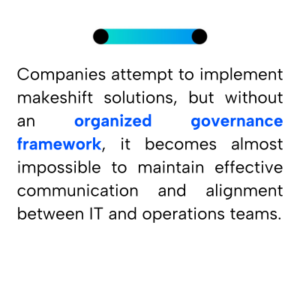Home / Insights / The Role of EDI in the Automotive Supply Chain
Insights
Our perspective about the Automotive Supply Chain challenges
Ignoring Risks, Managing It, or Initiating the Transformation? What Are Your Company’s Plans for 2025?
Next year will test the resilience of automotive suppliers worldwide. With automakers adjusting product mixes to meet sustainability and competitiveness demands, the complexity of operations continues to increase. Companies that fail to transform their processes and systems risk falling behind.
A frequently overlooked challenge is the integration of information received via EDI with ERP systems. Automakers frequently change their business rules, and suppliers who are not paying attention may fail to incorporate these changes into their systems. Without an expert to ensure proper integration, suppliers face a series of customizations to meet the specific needs of different customers, creating a fragmented and inefficient system—a true Frankenstein.
Moreover, the lack of well-defined processes and governance often hides these operational bottlenecks in the short term. Inefficiencies, delays, and high costs can accumulate silently until they have a significant impact, amplifying the risks.
A common example of an unnoticed error occurs when the supplier receives outdated demand forecasts due to excessive manual activities or integration failures with the ERP system. Without governance to evaluate the quality and timeliness of data flows, the issue can remain hidden.
What’s the result? Excess or shortage of stock appears weeks or months later, disrupting production schedules and delaying deliveries to the automaker. Without a robust governance model and continuous review, the problem worsens, resulting in inefficiency, additional costs such as production shifts and extra freight, and supply chain disruptions.

The Frankenstein Effect: Customization Without Integration
Staying Competitive
As automakers adjust their business rules, suppliers need to ensure their systems can quickly adapt to these changes. Without proper integration and governance, the risk of misalignment grows significantly. Suppliers often face the challenge of customizations to meet the diverse demands of customers, and without an effective integration strategy, the result is a fragmented system—a “Frankenstein” that lacks coherence and efficiency. The outcome is more manual work, delayed updates, and an inability to keep up with market changes.
These integration failures are exacerbated by the lack of specialists to ensure reliable connections between disparate systems. Companies attempt to implement makeshift solutions, but without an organized governance framework, it becomes almost impossible to maintain effective communication and alignment between IT and operations teams. Inconsistencies and data errors increase, leading to costly operational disruptions.

Integration and Governance: The Path to Efficiency

Reliable integration is crucial, but it needs to be accompanied by robust governance processes. Companies that leverage integrated information systems and maintain solid governance practices are better equipped to face these challenges.
When governance is in place, companies can:
• Track and implement system changes accurately and swiftly.
• Identify bottlenecks before they become major disruptions.
• Maintain continuous communication between IT and operations teams to ensure aligned and efficient workflows.
On the other hand, companies operating without clear governance or robust integration practices risk falling behind their competitors, especially when they fail to adapt to changes in automakers’ business rules.
Why This Can’t Wait
The automotive industry faces intense competition, with automakers constantly evolving their offerings and production requirements. At the end of each year, many automakers announce new launches and discontinue older models, which directly impacts suppliers’ production and demand planning. Without a reliable integration system, the risk of failing to keep up with phase-in and phase-out items is significant. This can result in excess inventory or critical shortages—neither of which can be ignored.
Ignoring the need for transformation, system integration, and well-defined processes places companies at high risk. By not proactively addressing these issues, companies risk being left behind in a market that demands agility, efficiency, and accuracy.
The Real Question: Is Your Company Ready for 2025?
In an environment where taking risks is no longer a viable option, the real question is: Why are so many companies still doing it? Companies that rely on outdated, disconnected systems and lack the governance necessary to maintain efficiency expose themselves to significant operational risks.
To remain competitive and agile, companies need to embrace transformation—adopting well-defined processes, integrating reliable data, and ensuring solid governance practices. By doing so, they can:
• Plan with accuracy, even in the face of dynamic demands and model phase transitions.
• Avoid financial losses caused by excess or shortage of stock.
• Maintain the agility required to meet the constantly changing demands of automakers.
It’s time for a change. 2025 is approaching, and it’s time to act. The risk of ignoring transformation has never been more evident—initiating the change is no longer a choice, it’s a necessity.





